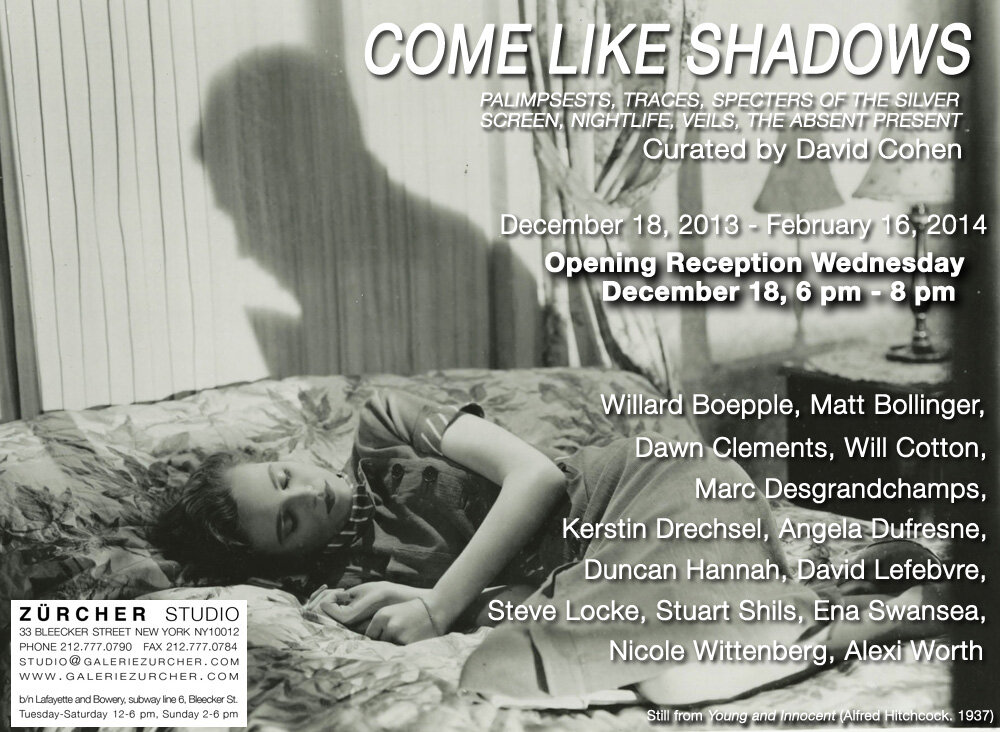

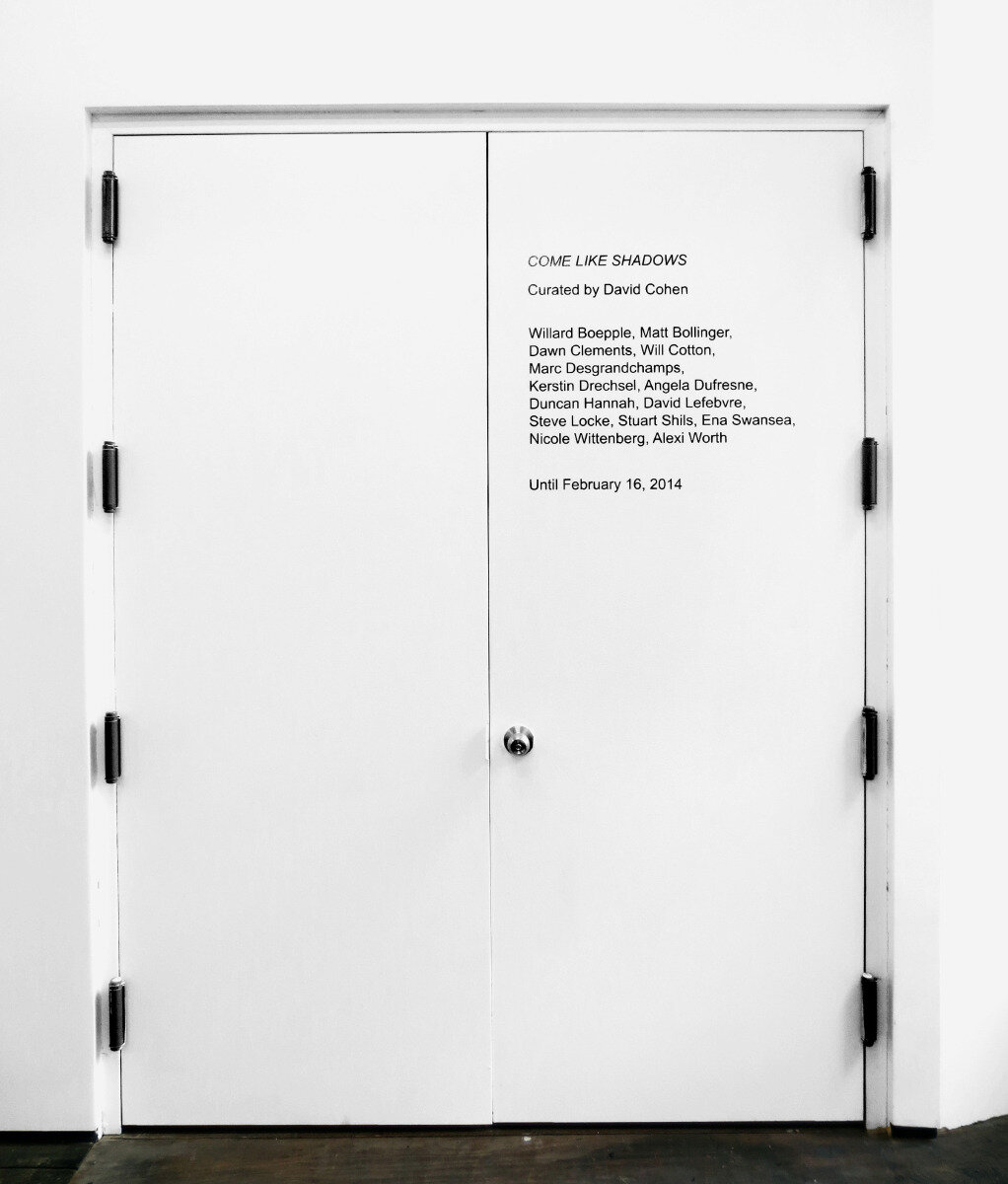
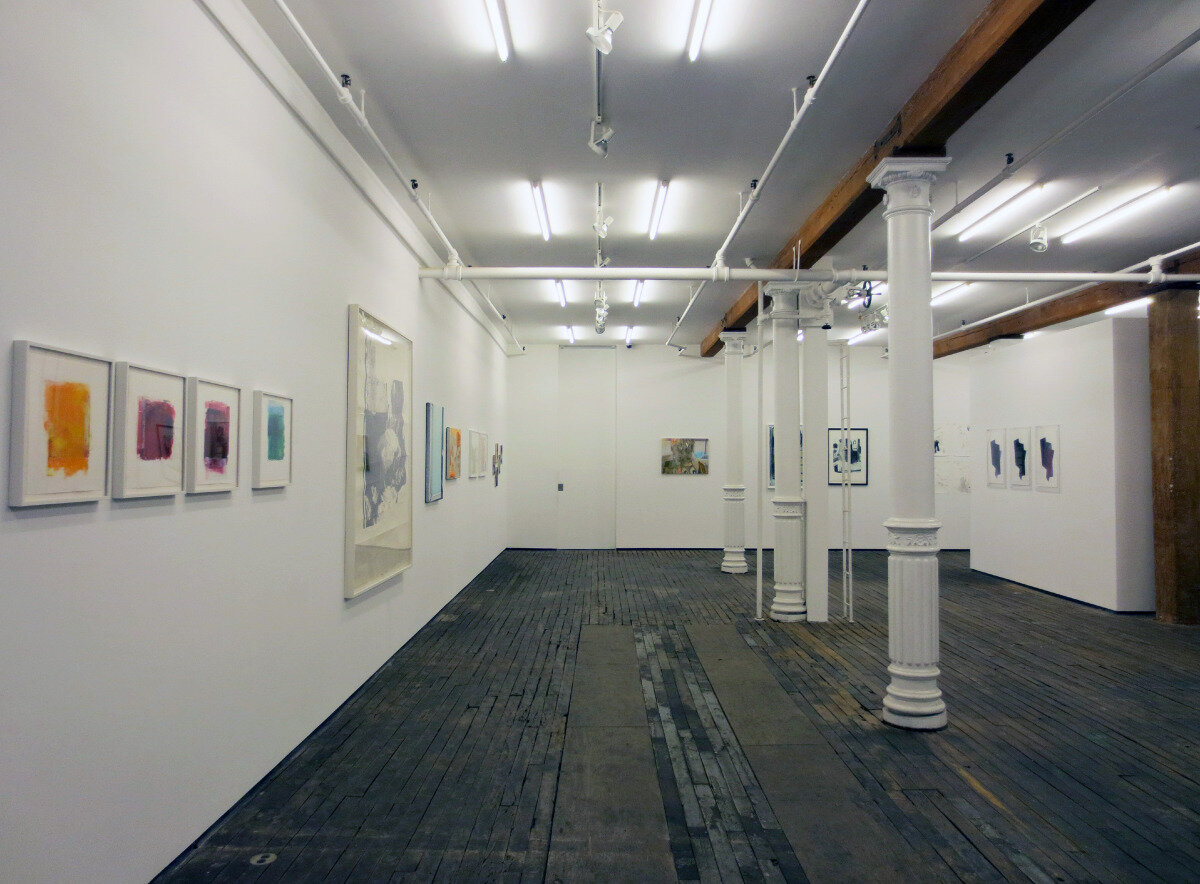
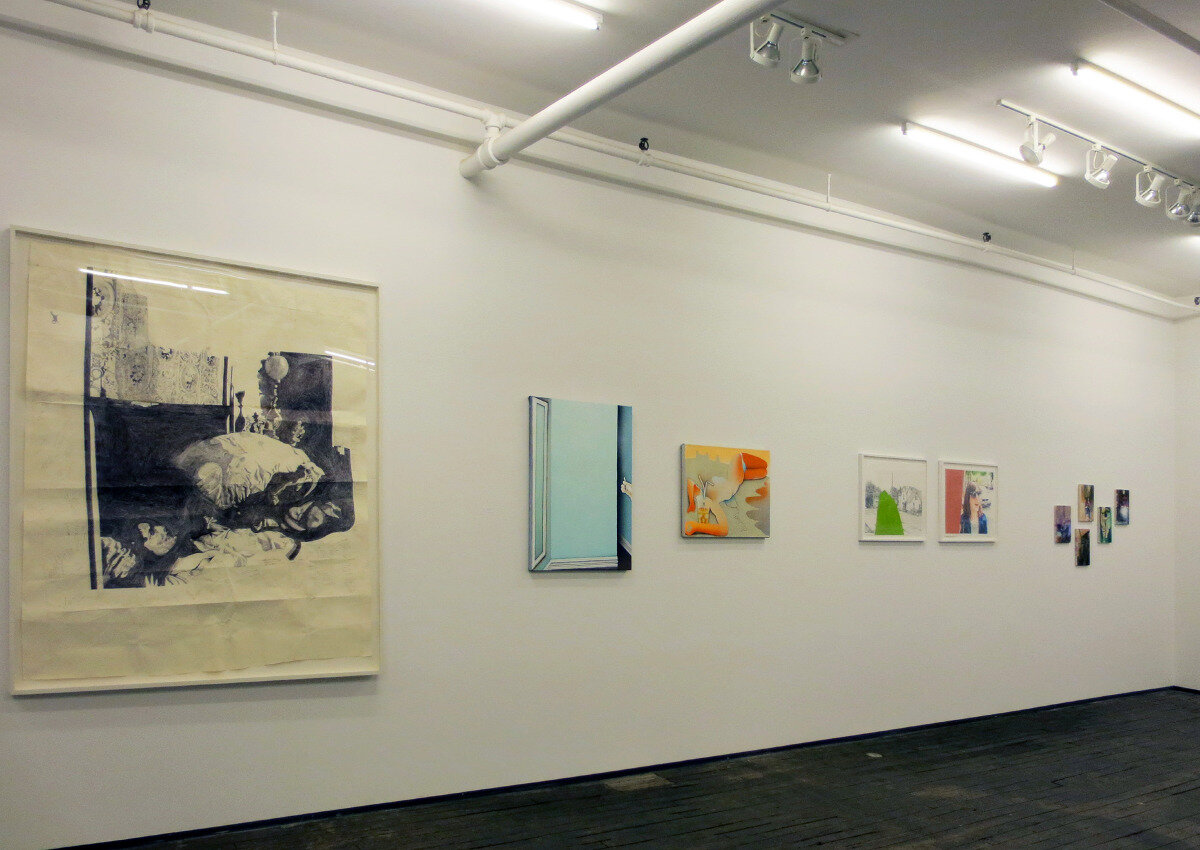
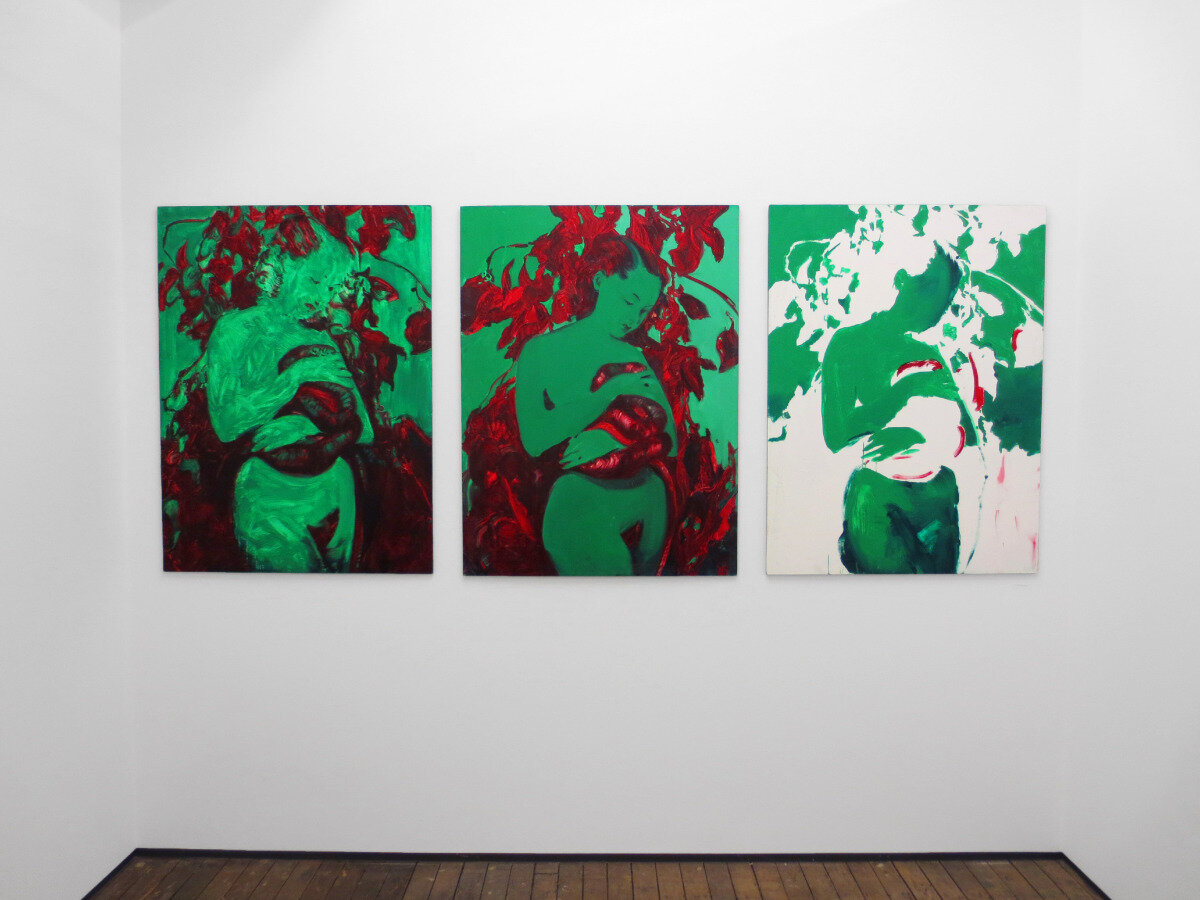
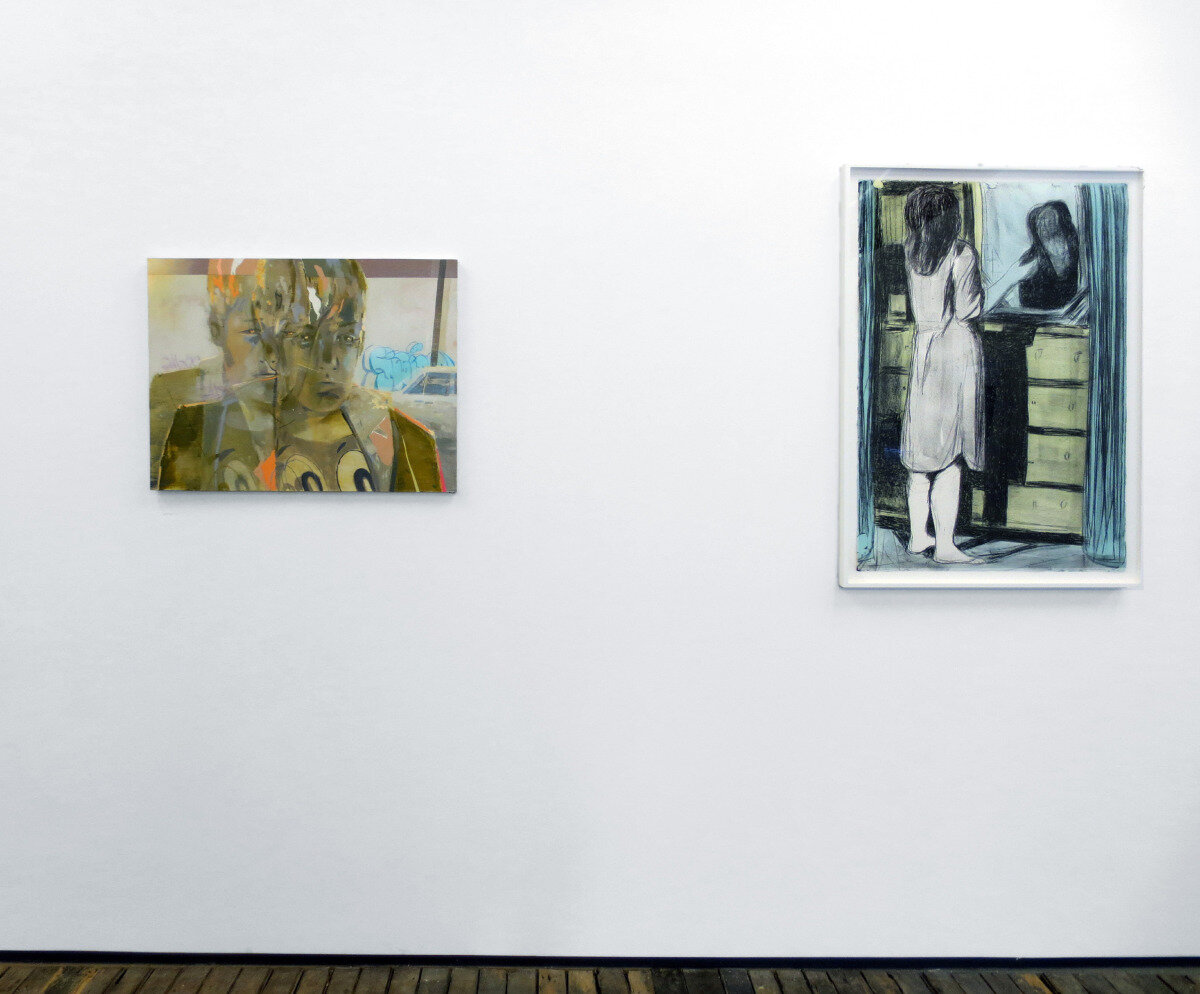
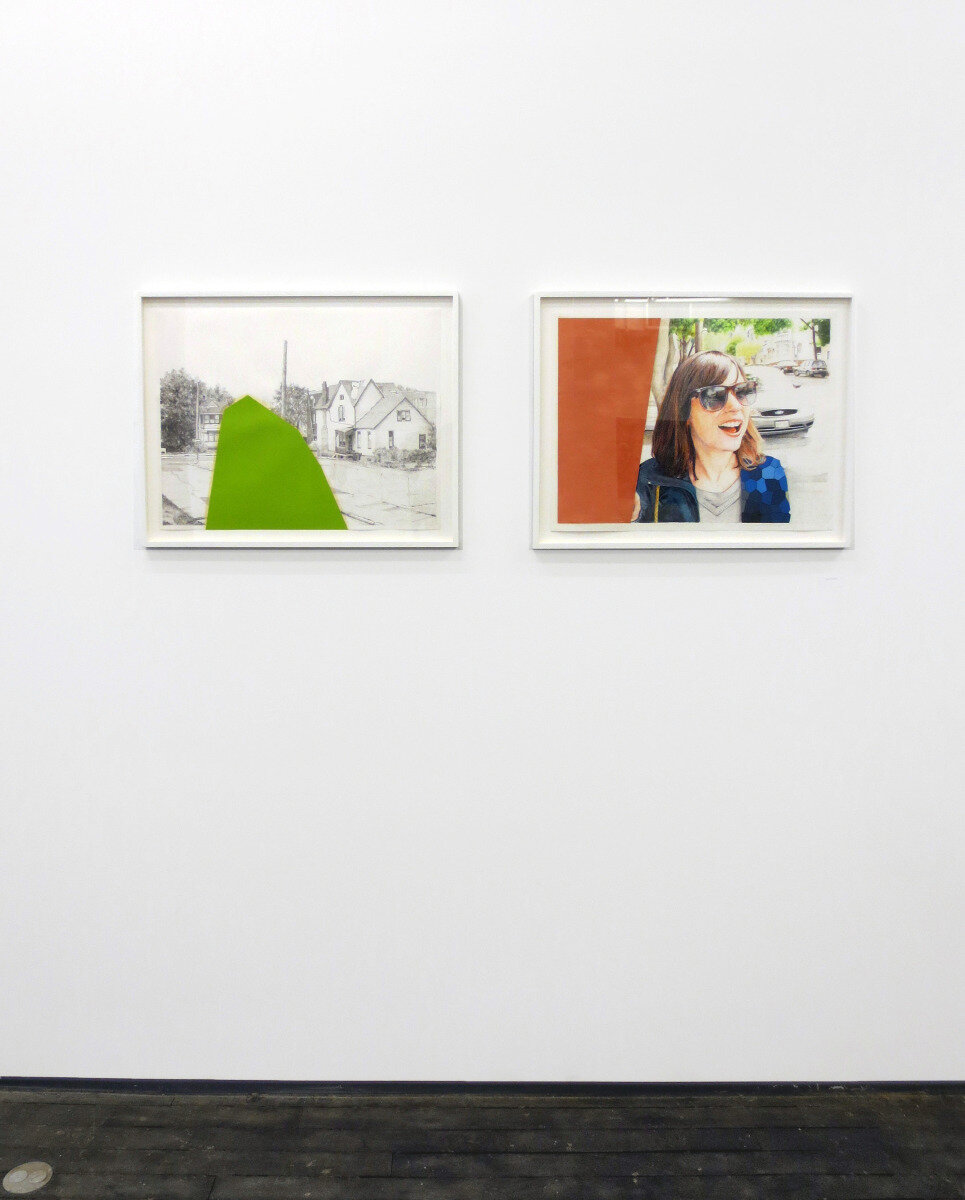
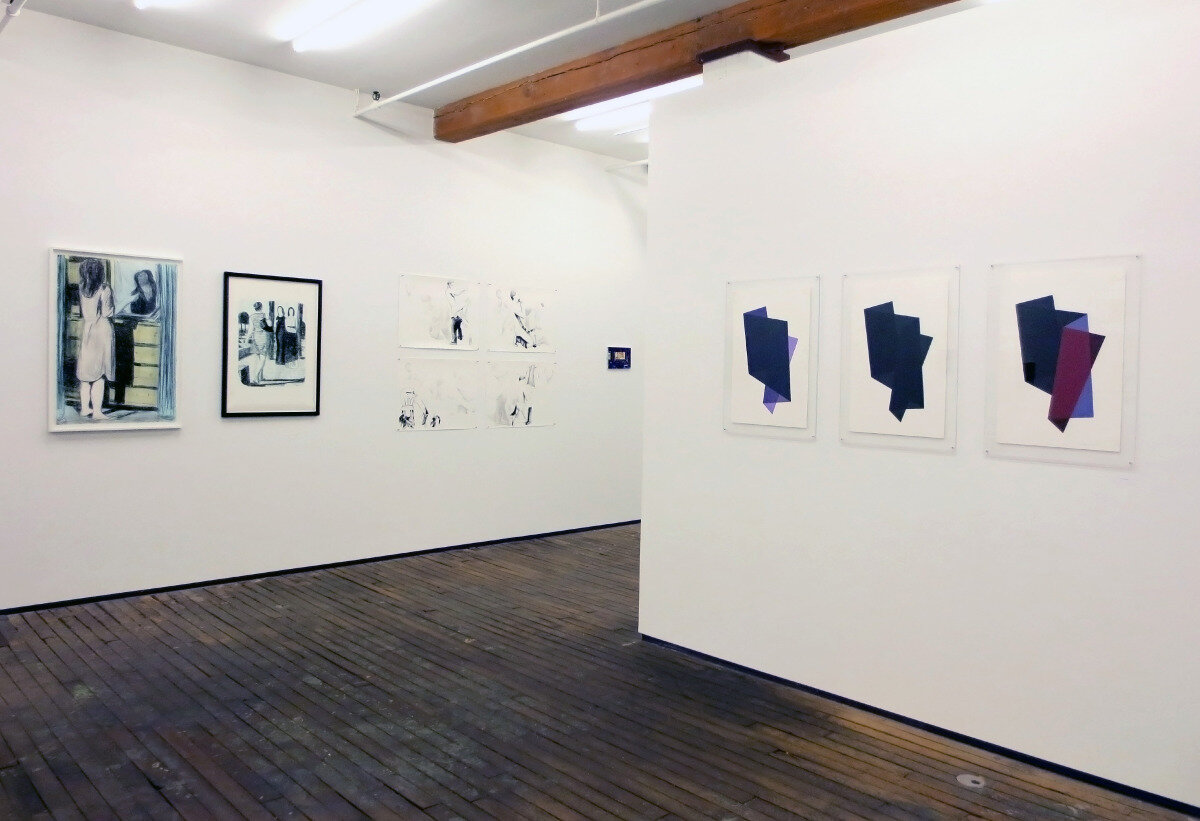
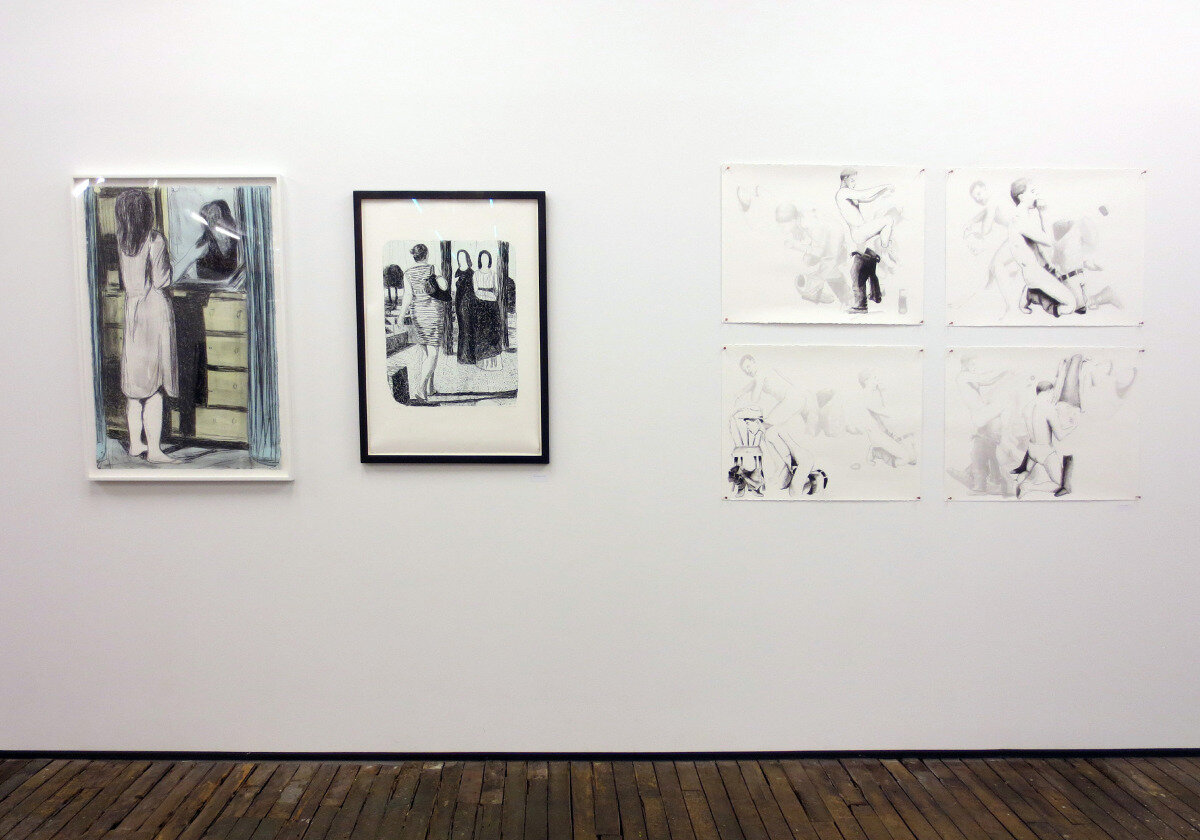
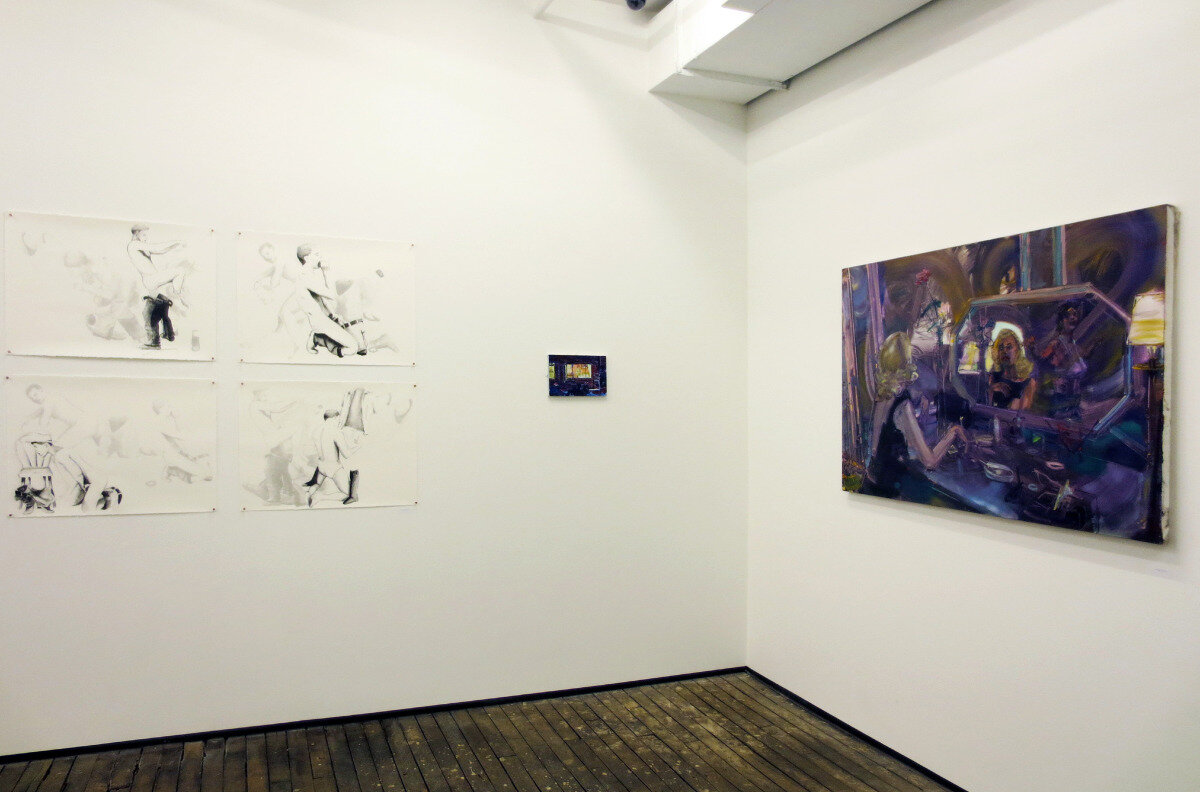
NEW YORK
Come Like Shadows: Palimpsests, Traces, Specters of the Silver Screen, Nightlife, Veils, The Absent Present
curated by David Cohen
Willard Boepple, Matt Bollinger, Dawn Clements, Will Cotton, Marc Desgrandchamps, Kerstin Drechsel, Angela Dufresne, Duncan Hannah, David Lefebvre, Steve Locke, Stuart Shils, Ena Swansea, Nicole Wittenberg, Alexi Worth
Zürcher Studio is very happy to announce ‘Come Like Shadows’, a group exhibition curated by David Cohen. ‘Come Like Shadows,’ whose title is a quote from Shakespeare’s Macbeth, is conceived as a kind of visual essay that explores the notion of the trace in contemporary image making, interpreting the theme of shadows and specters in a variety of subjective, iconographical and phenomenological ways.
_
Artists, inevitably, are captivated by movies. Many in this show manifest their infatuations in their work, and in a variety of ways. French artist Marc Desgrandchamps, for instance, gravitates – in his work in general and in his two lithographs in the present exhibition – towards scenes that embody a cinematic sense of flux while tapping modernist conventions of transparency and montage. Angela Dufresne, in her two paintings, fixes upon scenes that are simultaneously iconic and perverse. Dawn Clements, in a giant drawing in ballpoint pen, Jessica Drummond in Bed (My Reputation, 1946), 2012, the largest work in the show, exploits the subliminal sense of a movie playing on TV in a domestic situation, with obsessive notation blurring boundaries between inner and outer projections. Duncan Hannah casts Nova Pilbeam, star of Alfred Hitchcock’s early British movies, in a scene of Hannah’s own devising that pays three-way homage to – and emphasizes connections between – his beloved Nova, Hitchcock, and Edward Hopper. Seduction and self-absorption are recurring leitmotifs, meanwhile, in images of other actors “starring” in the exhibition, whether Elle Fanning in lithographs by Will Cotton, Nastassja Kinski in a painting on liquid graphite by Ena Swansea, or Jeanne Moreau in a work by Dufresne.
_
Cotton is joined by a number of printmakers in this exhibition for all of whom variation within repetition is as much an expressive or thematic element as it is a technical or publishing factor. His own pair of lithographs plays an optical game, when hung together as they are here, that recalls the transitions from black and white to color in The Wizard of Oz. In prints by abstract sculptor Willard Boepple and painter and sculptor Steve Locke the variation and repetition of screens generate or propel the imagery. Locke is represented by four from a set of 13 lithographs, Rapture, 2009, which envision sexual encounters in which one party, a believer, is “saved” in flagrante delicto, leaving only his clothing behind—but mid action. There is further play between iconography and process as the prints repeat stenciled groupings from plate to plate with one pair or group highlighted in each work. In a comparable way, the stencils used by Willard Boepple in his screenprint monoprints are colored uniquely and sequentially within sets of identical configuration so as radically to alter perspective, depth and even form in otherwise unchanging structures.
_
Like Boepple’s hard-edge glyphs, the evocative, painterly, ethereal monotypes of Stuart Shils explore possibilities of shadow and trace in phenomenological ways that accent the more literary allusions that abound elsewhere in the show. He exploits to the utmost the suggestion of ghost image in the palimpsest of the monotype plate. The ghost within the image is accentuated in the three unique works by Nicole Wittenberg that recall a printmaking sensibility by deploying contrasting painterly approaches to a same appropriated photograph by Paul Outerbridge, which image itself recalls Northern Renaissance paintings of the mother of mankind with all its implications of temptation and generation.
_
A number of artists share – if without the eschatology – Locke’s collision of realism and abstraction as a means to literalize absent presence. In works on paper by French artist David Lefebvre, for instance, oil painted hard-edge bars or geometric shapes of color intervene in evenly modulated graphite drawings in which orders of what is real and what is stylized, what is natural and what is schematic, are subverted; blocked-out shapes come to signify lacunae in the field of vision. Matt Bollinger’s fracturing of a boy’s head, recalling the faceting of cubism, evokes the mirroring ghost of split identity. And in cool yet voluptuous graphic images painter Alexi Worth explores the interaction of depicted shadow and the actual mesh screening material of his support with deft pictorial wit.
_
Also incorporating interplay of depicted shadow or shadowy activity into the conceptual fabric of her work is German painter Kerstin Drechsel. Her sweaty snapshot-like depictions of lesbian nightclub play constitute a kind of tender voyeurism in their intimate, delectable facture, resonating across the show with a small scene from Rear Window by Dufresne and with the artful misregistrations of a Shils monotype.
Curator’s Statement: “As a boy of sixteen I worked as a bank messenger,
dashing around London with documents to be signed and contracts to be sealed, mostly using the tube to get from Holborn to the West End or the City. At that time, I was quite obsessed by Tess of the D’Urbervilles: the novel, the movie, the character. I played a game with myself on each errand that if I passed the poster for Polanski’s Tess (then on general release) a given number of times in my subterranean peregrinations I would win the hand of Nastassja Kinski. I became expert in strategically positioning myself in the right carriage so that, say, at Chancery Lane I’d maximize the number of posters along my route. The rules were quite strict: I was not allowed to retrace steps or deliberately miss an exit. Gradually and surreptiously, other ads began to supplant my beloved poster as the Tess campaign wore off and the posters would be covered up or torn away. As if Tess’s fate and Nastassja’s languid gaze were not poignant enough, an insipid sensation of absence crept in, of the vacated spot. The memory or trace of her visage began to fade in a deepening recession, lost in the shadows of romantic impossibility.” David Cohen
_
David Cohen is publisher and editor of artcritical.com, the online magazine of art and ideas. Formerly gallery director at the New York Studio School (2001-10) where he remains on faculty and art critic of the New York Sun (2003-08), Cohen also teaches at the Pennsylvania Academy of the Fine Arts, Pratt Institute, and FIT. His publications include monographs and museum catalogues devoted to Alex Katz, Henry Moore, Jock McFadyen, Marc Desgrandchamps and Serban Savu.
